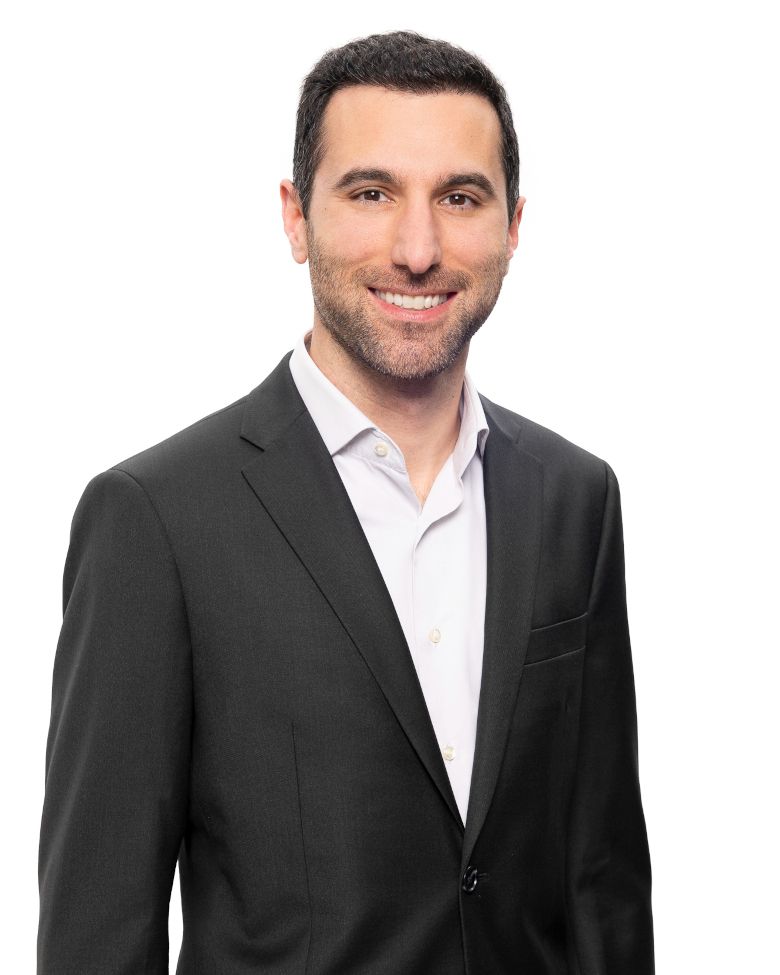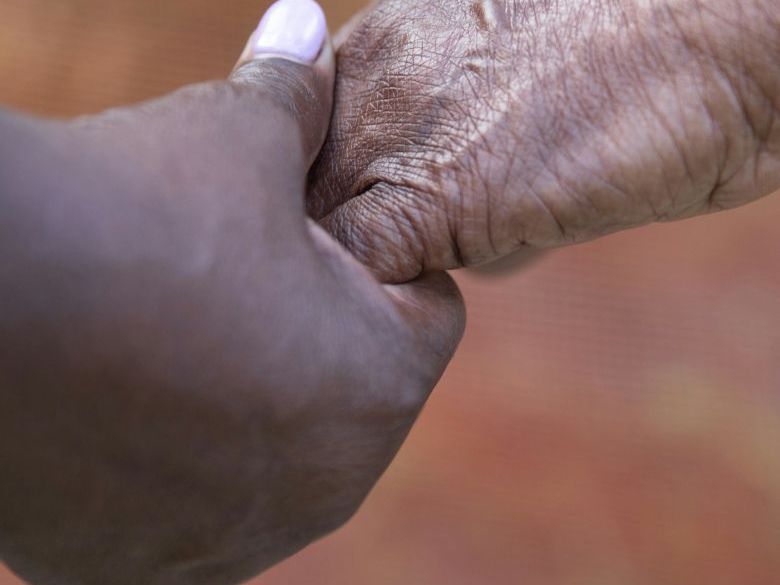How the ‘five Ps’ can close health equity gaps
How Policymakers, Payers, Providers, Patients, and Pharma are each uniquely able to impact health equity – and together, achieve real progress.

The World Health Organization (WHO) states that health is “a fundamental human right,” but many millions of people around the world remain deprived of this right.1
Health inequities occur due to a wide range of social determinants of health – where we are born, grow and live, access to education and employment, systemic racism, sexism and more – which while deep rooted, are “a consequence of political and economic choices.2”
The consequences are significant. It is estimated that lack of access to healthcare causes about 15,000 deaths a day.3 While the greatest burden of health inequity falls on people in low- and middle-income countries, health inequity remains a challenge everywhere, including in high-income countries. The USA has the highest rates of avoidable deaths among high-income countries,4 while in Europe, health inequity poses the greatest challenge to achieving public health goals in the coming years.5
Health equity – defined as “when everyone can attain their full potential for health and well-being”6 – benefits us all and makes society stronger and more resilient. It should be a priority for everyone. Achieving health equity requires action and collaboration among all stakeholders involved in health and social systems.
Here, we look at each of the ‘five Ps’ of health stakeholders – Policymakers, Payers, Providers, Patients, and Pharma – to see where each has the greatest potential to effect meaningful change, and examples of initiatives to close health equity gaps.
Policymakers: Shaping the environment to make change possible
Perhaps no stakeholder has the potential to make greater inroads into improving healthy equity than policymakers, who can shape health policy and system strategies to address the fundamental political, economic, and social factors that determine health.
The impact can be wide-reaching. Take A New Public Health Order for Africa for example, a framework developed by the Africa Centres for Disease Control and Prevention (CDC) to strengthen the self-sufficiency of African public health systems. Built on pillars including a strengthened public health workforce, and expanded manufacturing of vaccines, diagnostics and therapeutics, the framework will enable the "second independence of Africa," according to the Director General of the Africa CDC.7
In Europe meanwhile, the JAHEE (Joint Action Health Equity Europe) was formed in 2018 with the aim of greater equity in health outcomes through strengthening cooperation between participating countries. With actions across five policy domains – monitoring, governance, living environments, health systems and migration – the initiative enabled increased levels of national policy action and capacity to address health inequities.8
Payers: Prioritizing value and health outcomes
Real change requires motivation. The incentives must be there for people to challenge the status quo – this is where payers have a vital role to play as catalysts for change. Still too much healthcare is paid for ‘per service or item’, regardless of the outcome. Value-based payments add incentives by paying providers based on the outcomes of their product or service, or linking payment to value-added services beyond the product.
In the USA, where social determinants such as education, neighborhood, and racism contribute to significant health inequities,4 some states are implementing Medicaid health equity incentives. For example, in Oregon, the Health Authority appointed new coordinated care organizations (CCOs) – essentially networks of providers – which are required to invest in social determinants of health, including food and housing services.9
Providers: Building capacity and capabilities to expand reach
Individual practices and healthcare professionals can help to reach all patient populations within their local communities. Barriers often exist to under-served populations, such as practice accessibility, lack of health literacy, mistrust of healthcare providers, and provider prejudice.
In the UK, the UCL Institute of Health Equity published a report with guidance on how healthcare providers can reduce health inequalities through actions on the social determinants of health. These include workforce education and training, involving trusted community members, using plain language, and building respectful relationships with patients.10
In addition, embracing digital healthcare, such as telehealth, can remove travel and accessibility barriers.
Patients: Advocating for health equity
It is patients who ultimately pay the biggest price for health inequity. But patients are making themselves heard; individuals are increasingly involved in shared decision-making about their own care, and patient advocates are increasingly involved in decisions around healthcare system unmet needs and implementation of solutions.
The Global Patient Think Tank is a diverse group of patient community representatives focused on integrating the patient voice into the movement for universal health coverage (UHC). The group will launch the UHC Compass by December 2024 – a resource packed with information and tools to support patient communities to advance UHC in their country.11
Pharma: Embracing inclusivity and collaboration
Because pharma companies are often actively involved throughout the patient journey, they can impact health equity across a broad scope of areas: from disease awareness and health literacy, to making access to diagnosis, care and monitoring more equitable.
One key focus for the industry is improving clinical trial diversity, ensuring treatments are effective across diverse populations and supporting broader patient access. Many companies are taking steps to ensure their trials are accessible to underrepresented groups. The US FDA has issued guidance for companies to implement Diversity Action Plans to support enrollment of participants of historically underrepresented populations,12 and various tools to support individuals from diverse backgrounds to participate.13
Pharma also has the reach and scale to make a lasting impact on health equity through philanthropic collaborations; providing medicines but also laying foundations for a more sustainable future. Gavi, the Vaccine Alliance, has support from several industry partners, supplying millions of vaccine doses, providing essential expertise, and supporting vaccine rollouts.14
Working towards the ‘sixth P’: Progress
Initiatives supporting health equity can help each of the ‘five Ps’ to fulfil core objectives: from improving public health outcomes for policymakers, through to achieving better outcomes and quality of life for patients. See Figure 1 for the benefits per stakeholder. There are also significant benefits to overall societal welfare, for example through reduced costs, improved productivity, and strengthened societal resilience and inclusivity.

To maximize the value of health equity initiatives, the following key steps should be considered.
- When identifying the unmet need, work from the ‘ground up’ with local communities to thoroughly understand key issues and related root causes. Leverage data where possible to substantiate the need and highlight the potential benefits of working towards health equity.
- Identify objectives and action plans that incorporate incentives for accommodating health equity. What will really drive the change you want to see? Leverage existing policies and initiatives to help build your case and create momentum.
- Partner with other stakeholders wherever possible – ideally at the local level to ensure initiatives are applicable to the local context and recognized by the local community, including patients. Remember, individually each of the ‘five Ps’ can bring about change. Together, they can create a profound and lasting impact.
- Monitor and evaluate continually. Reassess what the initiative needs and retailor the approach accordingly as needed. When you see evidence of progress, verify, capture and communicate it as soon as possible.
The result? Real progress towards closing health equity gaps. And towards a fairer and healthier future.
You can find the e-version of this article published in Pharmaceutical Market Europe Magazine here: https://pme.pmlive.com/collections/pme-november-2024/1399c512-a023-11ef-8b79-42010a800017
References
1 World Health Organization. Health inequities and their causes. 2018. Available at: https://www.who.int/news-room/facts-in-pictures/detail/health-inequities-and-their-causes
2 Oxfam International. It's time to end extreme inequality. Available at: https://www.oxfam.org/en/take-action/campaigns/fight-inequality-beat-poverty/its-time-end-extreme-inequality
3 Oxfa. Views & Voices. Why does Oxfam say ‘inequality kills’? We break down the numbers. 2022. Available at: https://views-voices.oxfam.org.uk/2022/01/why-does-oxfam-say-inequality-kills-we-break-down-the-numbers/
4 The Lancet Public Health. A missed opportunity to tackle health inequity in the USA? Lancet Public Health. 2024 Aug;9(8):e533. doi: 10.1016/S2468-2667(24)00168-3. PMID: 39095129.
5 EuroHealthNet. EuroHealthNet Foresight: What will public health look like in 2035? https://eurohealthnet.eu/publication/eurohealthnet-foresight-what-will-public-health-look-like-in-2035/
6 WHO. Health equity. Available at: https://www.who.int/health-topics/health-equity
7 Think Global Health. Global Health and the "Second Independence of Africa". 2024. Available at: https://www.thinkglobalhealth.org/article/global-health-and-second-independence-africa
8 Bucciardini R, Zetterquist P, Rotko T, et al. Addressing health inequalities in Europe: key messages from the Joint Action Health Equity Europe (JAHEE). Arch Public Health. 2023 May 11;81(1):89. doi: 10.1186/s13690-023-01086-3. PMID: 37170153; PMCID: PMC10173226.
9 Health Affairs. To Advance Health Equity, Federal Policy Makers Should Build On Lessons From State Medicaid Experiments. 2021. Available at: https://www.healthaffairs.org/content/forefront/advance-health-equity-federal-policy-makers-should-build-lessons-state-medicaid
10 UCL Institute of Health Equity. Working for Health Equity: The Role of Health Professionals. 2013. Available at: https://www.instituteofhealthequity.org/resources-reports/working-for-health-equity-the-role-of-health-professionals/the-role-of-health-professionals-exec-summary.pdf
11 International Alliance of Patient Organizations (IAPO). CPTT Communication Deck. Available at: https://www.iapo.org.uk/sites/default/files/files/BCR/GPTT%20communication%20deck%20May%2024.pdf
12 U.S. FDA. FDA Guidance Provides New Details on Diversity Action Plans Required for Certain Clinical Studies. Available at: https://www.fda.gov/news-events/press-announcements/fda-guidance-provides-new-details-diversity-action-plans-required-certain-clinical-studies
13 U.S. FDA. Clinical Trial Diversity. Available at: https://www.fda.gov/consumers/minority-health-and-health-equity/clinical-trial-diversity
14 Gavi. Gavi’s partnership model. Available at: https://www.gavi.org/our-alliance/operating-model/gavis-partnership-model












